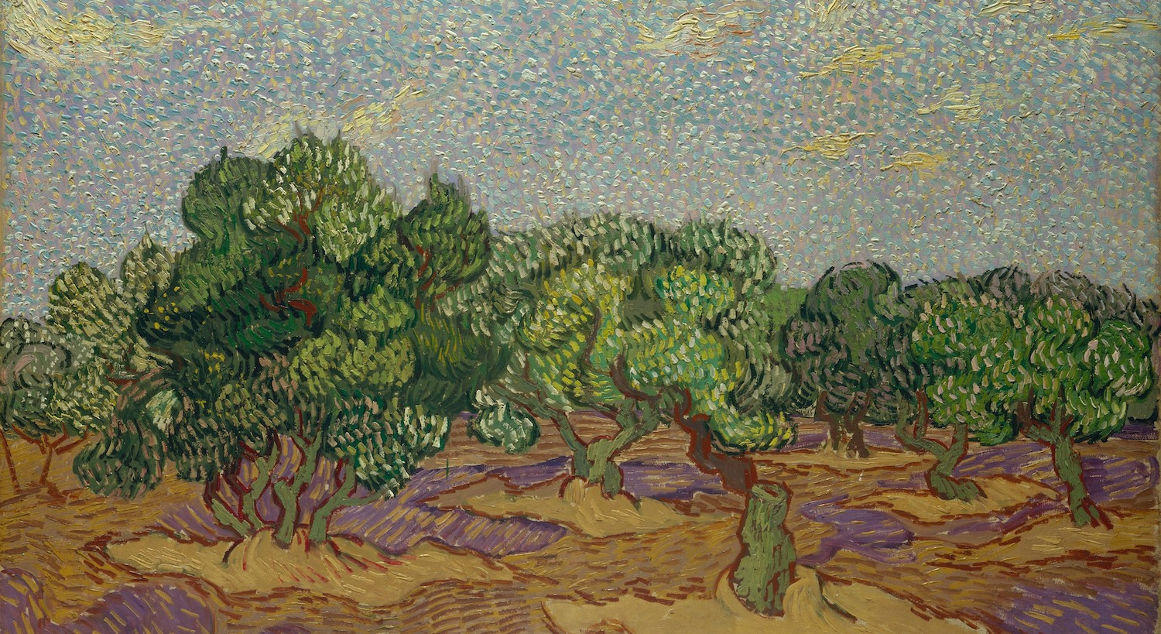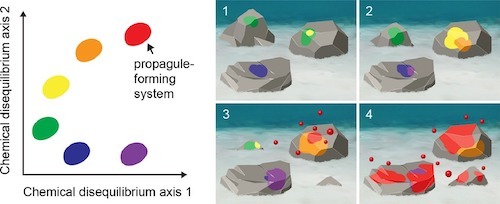
- Complexity Explorer /
- 07 Feb 2019
- Astrobiology Chemistry Biology Physics
The first month of 2019 has been a time of reflection and re-assessment. We have begun work on the glossary, you may have noticed there are fewer terms than there use to be. With the arrival of Interim Vice President for Education and Complexity Explorer star Dave Feldman we have taken the time to prune the glossary down. We are now growing it back with focus on useful descriptions of terms in the context of Complexity Science. Because of its inherently multi-disciplinary nature, Complexity Science borrows many terms from many traditional disciplines. We want you to be able to grasp what is meant when Complexity Scientists say evolution, fitness, resilience, or emergence for example. We expect that this project will be completed this summer - defining terms is a fun and challenging task. So if you follow us at @complexexplorer on Twitter or on Facebook you will notice that the "Complexity Term of the Day" has taken a hiatus until the glossary is up and running again.
Origins of Life as featured in Parallax
In January we spent time with Origins of Life course instructors Chris Kempes and Sarah Maurer in the the studio filming lectures on water as an organizing force, quasi-species selection theory, chemical configurations, and macroscopic theories in biology. Below is an article featured in the winter issue of SFI's quarterly newsletter Parallax about the course!
 This summer, SFI’s online education platform, Complexity Explorer, will offer its first course based on “unsettled” research. The new course, “Origins of Life,” will be taught by mathematical biologist and SFI Professor Chris Kempes, and Sarah Maurer, Associate Professor of Chemistry and Biochemistry at Central Connecticut State University.
This summer, SFI’s online education platform, Complexity Explorer, will offer its first course based on “unsettled” research. The new course, “Origins of Life,” will be taught by mathematical biologist and SFI Professor Chris Kempes, and Sarah Maurer, Associate Professor of Chemistry and Biochemistry at Central Connecticut State University.“This course is unlike anything we’ve offered before on Complexity Explorer,” says Linden Schneider, SFI’s Online Education Coordinator. “Chris and Sarah’s course aims to take a wide reaching and unsettled area of research and present it to a wide audience.”
Current courses on the platform cover well established, foundational areas and methods for complexity science, such as nonlinear dynamics and chaos, agent-based modeling, and fractals and scaling. Origins of Life, however, emerges from an active Research Coordination Network (RCN) funded by a National Science Foundation grant on which Kempes and SFI President David Krakauer are co-principal investigators. Their project aims to push the field forward by bringing new and synthetic thinking to the question of how life emerged from an abiotic world.
Like the Santa Fe Institute, the study of life’s origins is highly interdisciplinary. But it’s “interdisciplinary where we don’t yet know how the disciplines will be put together,” Kempes explains. “We generally know what chemistry to teach medical doctors or what physics to teach engineers, but in the origins of life, this is not the case at all.”
The RCN connects scientists from many different disciplinary backgrounds, as well as those from different “camps” in the study of origins of life, such as those who focus on RNA and those who focus on geo-microenvironments as the key to unlocking the secrets of life’s beginnings. This diversity of backgrounds and foci will be represented in the online course, as many of the RCN members have filmed guest lectures.
The course will walk students through this active area of research by exploring topics such as the evolution of intelligence, information transmission in chemical systems, and questions including whether life is an easy or hard process and what aspects of extant life are arbitrary.
According to Schneider, one of the long-term aims of the course is to “draw new minds to the field, as Origins of Life is not a traditional discipline of study.” The Origins of Life course will be free and open to all through Complexity Explorer, SFI’s online education portal at complexityexplorer.org.
Year-end subtitle totals
 We have finally got our year-end subtitle totals in! The top subtitler in 2019 was Hazm Talab with a whopping 507 minutes - that's 8.5 hours in Arabic. Coming in second was Mujun Chen with 229 hours in Chinese and third Diego Diaz with 217 hours - Diego holds on to the top subtitler of all time title with 517 minutes in Spanish. We had a subtitler re-appear after having been gone for a while - welcome back to Matias Agelvis subtitling in Spanish and English - you are only 33 minutes away from a t-shirt!
We have finally got our year-end subtitle totals in! The top subtitler in 2019 was Hazm Talab with a whopping 507 minutes - that's 8.5 hours in Arabic. Coming in second was Mujun Chen with 229 hours in Chinese and third Diego Diaz with 217 hours - Diego holds on to the top subtitler of all time title with 517 minutes in Spanish. We had a subtitler re-appear after having been gone for a while - welcome back to Matias Agelvis subtitling in Spanish and English - you are only 33 minutes away from a t-shirt!Our team grew since we wrote last - we are at a healthy 425 subtitlers - all of your expertise is greatly appreciated and will come in handy when we get our new Origins of Life videos up for subtitling. If you are not yet a member of the Complexity Explorer subtitling team - join now - to make a hugely meaningful contribution to our global community of complexity scholars!
To interact with fellow Complexity Scholars join the Complexity Explorers Facebook group.
Title Image: "Olive Trees" Vincent van Gogh, 1889. This is one of five pictures of olive orchards that Van Gogh made in November 1889. Painted directly from nature but animated by Seurat-like stippling and stylized passages of broken color, these works responded to recent compositions by Paul Gauguin and Émile Bernard. "What I’ve done is a rather harsh and coarse realism beside their abstractions," Van Gogh observed, "but it will nevertheless impart a rustic note, and will smell of the soil."
